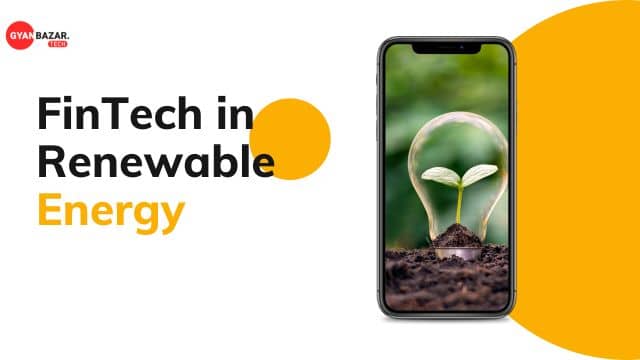In recent years, the convergence of financial technology (FinTech) and renewable energy has been revolutionizing the way we think about funding models. This powerful partnership has opened up new avenues for investment, accelerated project development, and fostered sustainable practices that are crucial for our planet’s future. In this article, we’ll explore how FinTech is transforming funding models in the renewable energy sector.
The global push towards renewable energy sources, driven by environmental concerns and technological advancements, has paved the way for innovative funding models. FinTech, an amalgamation of finance and technology, has emerged as a key player in reshaping these models.
The Rise of Renewable Energy
Renewable energy sources like solar, wind, and hydroelectric power have gained immense prominence as alternatives to fossil fuels. However, funding large-scale projects to harness these resources has often posed challenges due to their upfront costs and long payback periods.
Traditional Funding Challenges
Traditional funding avenues, such as bank loans and venture capital, have limitations in accommodating the unique financial dynamics of renewable energy projects. The need for novel funding approaches has given rise to the intersection of FinTech and renewable energy.
The FinTech Revolution
FinTech has disrupted traditional financial systems across various sectors, and renewable energy is no exception. Its ability to provide efficient, transparent, and accessible financial solutions is reshaping how projects are funded and managed.
Peer-to-Peer Lending for Energy Projects
One of the transformative models facilitated by FinTech is peer-to-peer lending. This approach connects investors directly with renewable energy projects, cutting out intermediaries and reducing transaction costs. It empowers individuals to support clean energy initiatives while earning attractive returns.
Crowdfunding Renewable Initiatives
Crowdfunding platforms have democratized renewable energy investment. They enable a large number of individuals to contribute small amounts to collectively fund projects. This approach not only diversifies funding sources but also raises awareness about the importance of sustainable energy.
Blockchain and Smart Contracts Streamlining Investments
Blockchain technology and smart contracts have introduced transparency and efficiency to renewable energy investments. These technologies enable secure, tamper-proof records of transactions, simplifying complex agreements and ensuring funds are allocated as intended.
Big Data Enhancing Risk Assessment
FinTech leverages big data analytics to assess the feasibility and risks of renewable energy projects. By analyzing vast amounts of data, investors can make informed decisions, minimizing uncertainties and increasing the attractiveness of funding opportunities.
The Role of AI in Predicting Energy Returns
Artificial Intelligence (AI) plays a pivotal role in predicting energy yields. AI models process data from weather patterns, equipment performance, and energy consumption to forecast energy generation accurately. This data-driven approach enhances the accuracy of return predictions.
The Green Bond Market
Green bonds have gained traction as a way to finance environmentally friendly projects, including renewable energy initiatives. These bonds attract socially responsible investors who seek both financial returns and positive environmental impact.
Regulatory Landscape and Security Considerations
While FinTech presents numerous benefits, navigating regulatory requirements and ensuring cybersecurity remain critical. Collaborative efforts between regulatory bodies and industry players are necessary to create a conducive environment for FinTech-driven funding models.
Advantages and Disadvantages of FinTech in Renewable Energy
Advantages:
- Increased accessibility to renewable energy investments
- Enhanced transparency and accountability
- Efficient fund allocation through smart contracts
- Data-driven decision-making for better risk management
Disadvantages:
- Potential cybersecurity vulnerabilities
- Regulatory uncertainties impacting cross-border investments
- Dependency on technology may hinder traditional investors
- Future Outlook and Trends
- The symbiotic relationship between FinTech and renewable energy is poised for further growth. As technology evolves and sustainability becomes paramount, new avenues for funding will emerge, driving innovation and propelling the transition to cleaner energy sources.
Conclusion
The fusion of FinTech and renewable energy marks a pivotal moment in shaping our sustainable future. Innovative funding models driven by technology are accelerating the adoption of clean energy solutions. As we navigate the complexities of this dynamic landscape, collaboration, adaptability, and responsible innovation will be key to realizing the full potential of this transformative partnership.
Frequently Asked Questions
- What is the role of FinTech in renewable energy?
- How does peer-to-peer lending benefit both investors and energy projects?
- What are the advantages of crowdfunding for renewable initiatives?
- Can you explain how blockchain ensures transparency in energy investments?
- What challenges do green bonds address in funding renewable projects?

